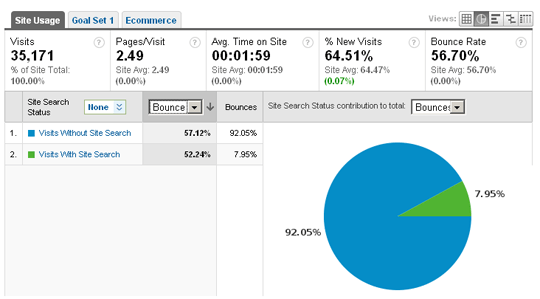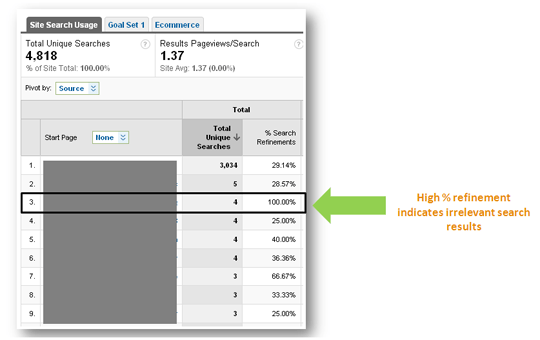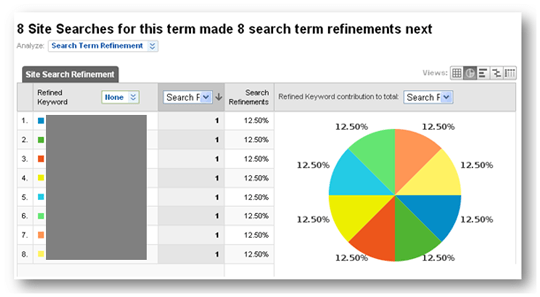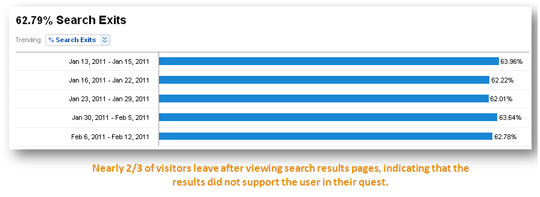Internal site search tracking – set it up and use the data to see what your visitors are looking for. Done and done right? Actually, not the case. If you haven’t been digging into your Google Analytics internal site search reports as of late, start now. Why? Internal site search data will enable you to better understand your customer’s intent, to use the data to improve the user experience, to help users find products and information and ultimately to use as a tool that will help improve conversions and sales.
Let’s start from the beginning. No search feature on your website? No problem. This can easily be added and Google offers this service at a very affordable price. Once you have the site search feature added to your site you can implement tracking in Google Analytics. To do this, follow the instructions here.
When most people think of the benefits of tracking internal site search, they are thinking about what keywords their website visitors are using in the search box. However, this is just barely scratching the surface. Just a few other reports and how you can use them:
- When did visitor’s use site search?
- Where did visitors begin their searches?
- Which pages did visitors find?
- Are visitors refining their search queries?
- Do visitors bounce after using site search?
- Visitors who search vs. those that did not (see below)

This last report is especially useful. Note that in this example, visitors that used site search had a much lower bounce rate than visitors that did not use site search. This same report can be utilized to compare different metrics such as conversion rates or average time spent on site.
Another of my favorite features is the search query refinement. Once a user executes an initial search query and search results are pulled up, the user may be dissatisfied for whatever reason and refine the search query again. If visitors are regularly refining their search queries it may be an indicator that initial search results aren’t meeting expectations. This why it is critical to ensure you’ve taken steps to optimize for internal site search (which will be addressed in part II of this post).


Another report to take advantage of is the % search exit report. How many of your users bounce after using site search? In this case, nearly 2/3 of users are leaving after they used the site search feature, indicating that the results did not support the user in their quest.

So what to do with all this information? Stay tuned for Part II of this post where I’ll outline best practices for site search optimization, ways to implement site changes based on the data and using site search to support your content strategy.
Check out the SEO Tools guide at Search Engine Journal.




